Three buses to reach Cahuita from Orosi:
The 6.45am from Orosi to Cartago – standing room only.
Cartago – we immediately caught the 7.40am bus to San Jose – it was a one hour journey.
Once in San Jose we walked to the next bus station. We waited one hour for the 10am bus to Cahuita. It was supposedly a four hour journey, but with road works along the way causing delays the journey was five hours. To our surprise this was the first bus journey where there were no stops.
After we reached the Port of Limon the road wound its way beside the black sand beaches littered with driftwood and tree stumps. Arrived around 3pm in Cahuita and walked to our accommodation.
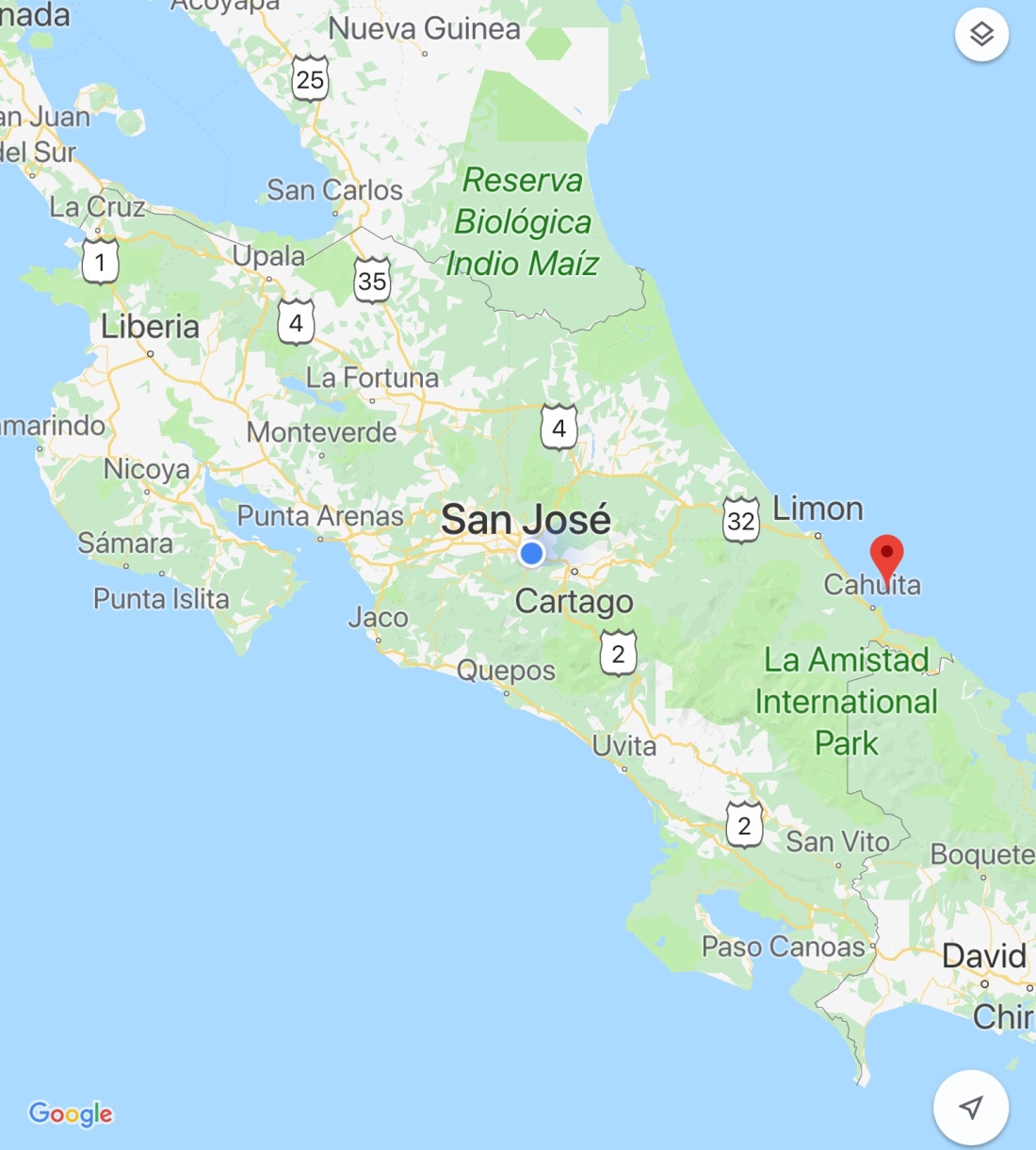
Above: map of Costa Rica detailing Cahuita
—————————————————————————————————————————————
After our experience of heat at Drake Bay on the Osa Peninsula we had almost decided to give Cahuita a miss – one of the Drake Bay locals had advised it was even hotter on the Caribbean coast. Well, what a surprise. And a delight. During our four day stay the weather was generally overcast with occasional sunny patches. There was a constant sea breeze. I was immensely relieved. And rain overnight. The frogs commenced a loud evening chorus.
Our accommodation was Pepe’s Tropical Bungalow, rustic accommodation directly opposite the black beach. (And the most expensive restaurant in Cahuita – apart from ‘out-there’ prices, they charge 15% tax, AND a 15% service charge. We did not dine there). Yes, the beach had black sand. The advantage of Pepe’s was being located a ten minute walk from the main restaurant and bar area – the quiet location suited us down to the ground. It was also priced very reasonably – accomodation tends to be on the high side in Cahuita.
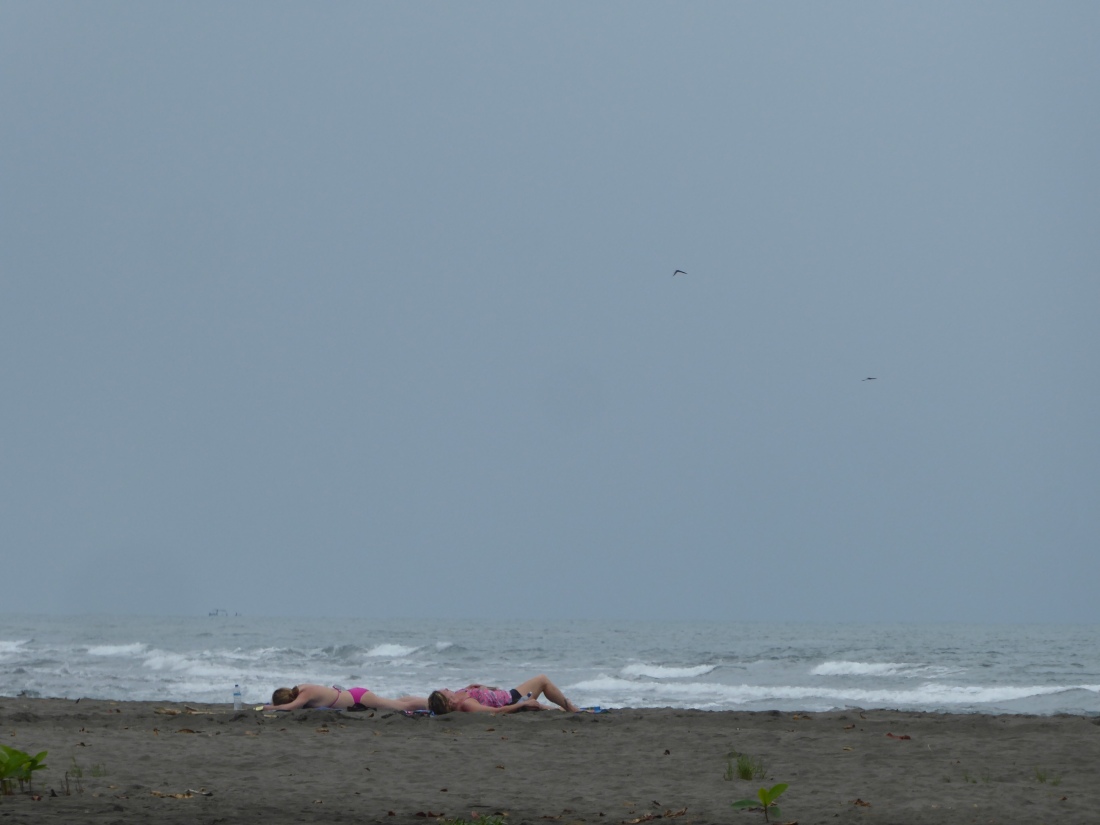
Above: sunbathers – perhaps they had travelled a long way for sun and sand.
—————————————————————————————————————————————-
The small town of Cahuita has a few paved streets, the remaining streets are dirt and gravel, albeit with a fair share of potholes. There are discussions regarding sealing the roads, but one resident westerner we spoke with said she likes the ambience of the dirt roads. One benefit, as I see it, is it slows down the traffic. The overnight rain was a bonus as it subdued the dust.

Above: Kawe Soda: traditional kitchen where we dined nearly every day.
—————————————————————————————————————————————-
Cahuita National Park is one of the smallest national parks in Costa Rica. It commences at sea level, and the highest elevation is five metres. We visited the National Park on two occasions. One of the entrances opens at 6am, so we were there not long after opening. The facilities are excellent – numerous seats and rain shelters, and toilets located at the entrance. A ‘donation’ of US$5 per person was suggested – a very different policy from many of the other national parks that charge US$20 per person.
It’s odd, but the sand alters from black to white at the entrance to Cahuita National Park. And it is one of those classic wide beaches, suitable for swimming, except where red flags indicated rips. I’m sorry, but I could not find an explanation as to why the sand suddenly changed colour.
The park was a feast for the eyes and senses. White-faced Capuchins swung through the branches. Mantled Howler Monkeys screamed from high above us.

Above: young Mantled Howler Monkey
—————————————————————————————————————————————-
On our first visit we walked along the trail as far as the creek – the white sandy beach on one side, the dense jungle on the other side. Like an enchanted forest. Low lying areas were swampy – the dark still waters with numerous reflections of various greens in sharp contrast to the constant movement and crashing of the waves. Vines climbed trees, reached the top, and with nowhere to go, hung down in wide leafy curtains. Dense undergrowth. The slightest movement of leaves caused us to stare silently. And concentrate, looking for hidden clues. This is where most of the action occurred. Chestnut-backed Antbirds and other skulking allies darted about. Red Squirrels raced along branches. Sloths dozed high in the trees. We actually witnessed one moving – it was slow motion to the max!

Above: Three Toed Sloth
—————————————————————————————————————————————-
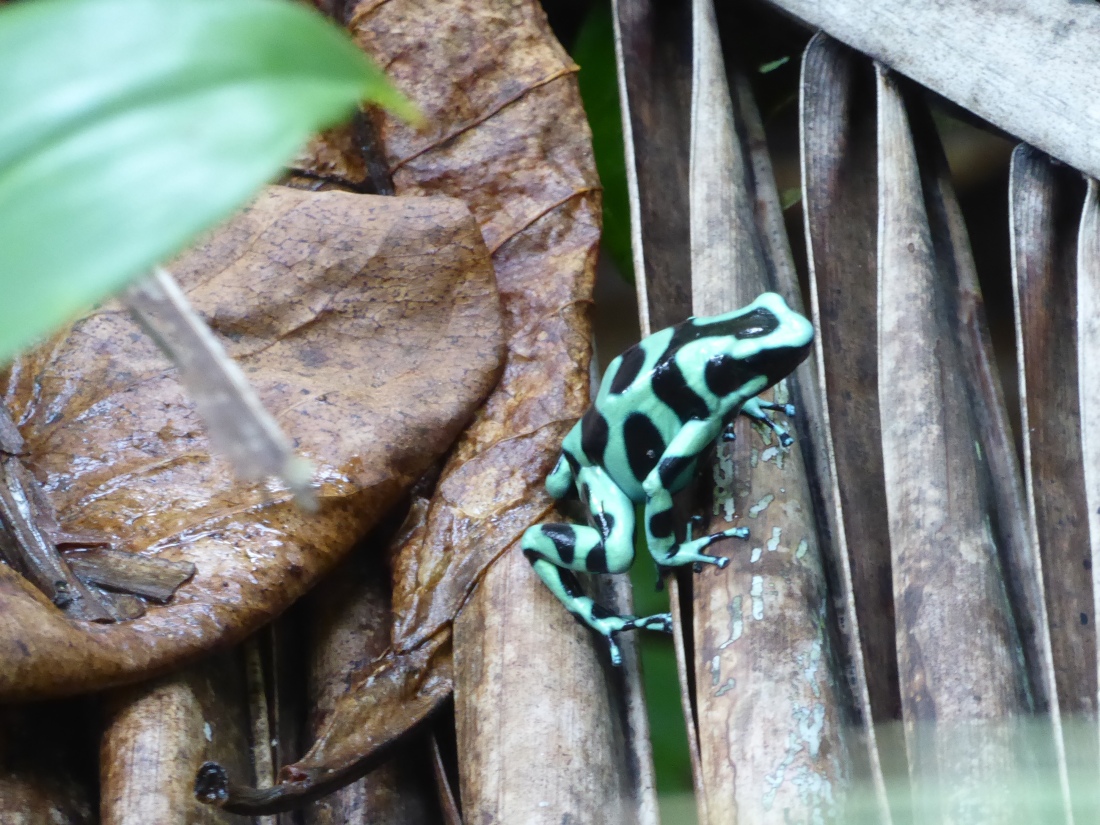
Above: Fellow tourists pointed out this Poisonous Green Dart Frog.
—————————————————————————————————————————————-
We saw four species of Heron: Boat-billed Heron, Little-blue Heron, Black-crowned Night Heron and Great-blue Heron.

Above: Boat-billed Heron.
—————————————————————————————————————————————-
Here is another wonderful looking reptile:
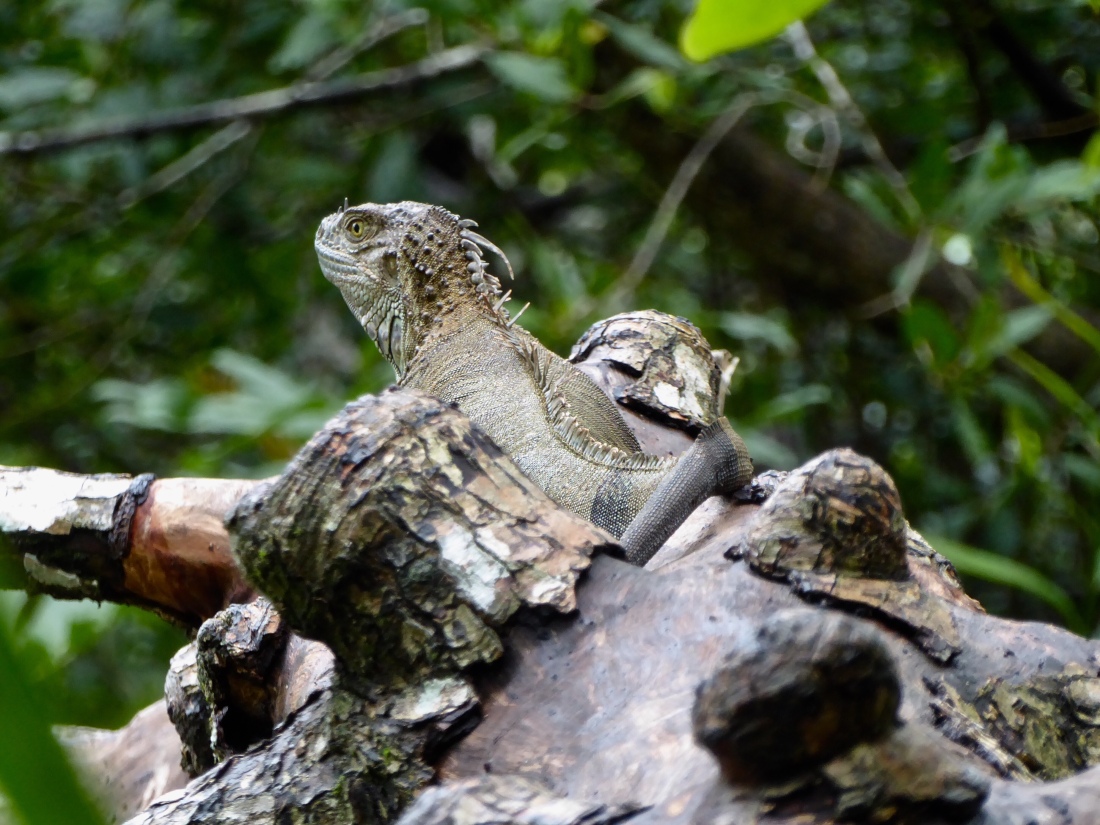
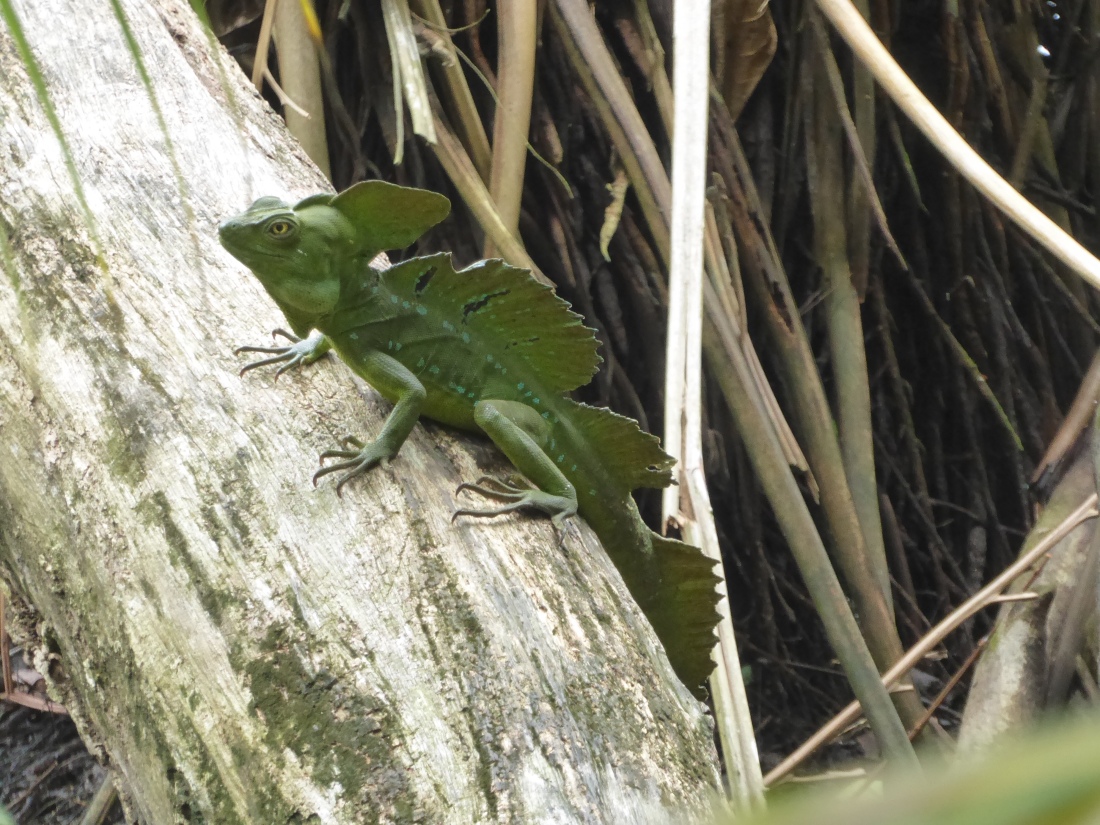
Above: Common Basilisk
—————————————————————————————————————————————-
On our second visit we decided to cross the creek and walk to the point. A journey of 4.1 kilometres one way from the entrance gate. We removed our shoes and socks and waded through the warm water. Not far along this section of the trail we came across some abandoned iron cables – that’s odd, we thought. Then a little further along an abandoned exploratory oil well dating to 1910 – right on the trail – only five or six metres from the waters edge. Warm water bubbled out from the concrete oblong structure. The beach from the creek to the point was extremely narrow, generally only one or two metres wide. Additionally, the beach was strewn with driftwood and trees that had been uprooted from the jungle edge – the dirt still visible in some of the large root systems. Strong winds, strong tides, both, or climate change? It was either raining or drizzling – we were appreciative of the shelters. A long boardwalk made entirely of reconstituted plastic surprised us – obviously wooden structures do not last long in such steamy tropical environments and management had opted for a more durable material.
We saw a few Agoutis on the trail – a rodent type animal. They quickly disappeared back into the dense vegetation when we approached them.

Above: Agouti
—————————————————————————————————————————————-
A raccoon even wandered along the trail towards us and stopped only two metres in front of me, then foraged amongst vegetation. My camera jammed! (It’s ok now). John was fortunate to be able to video the raccoon.
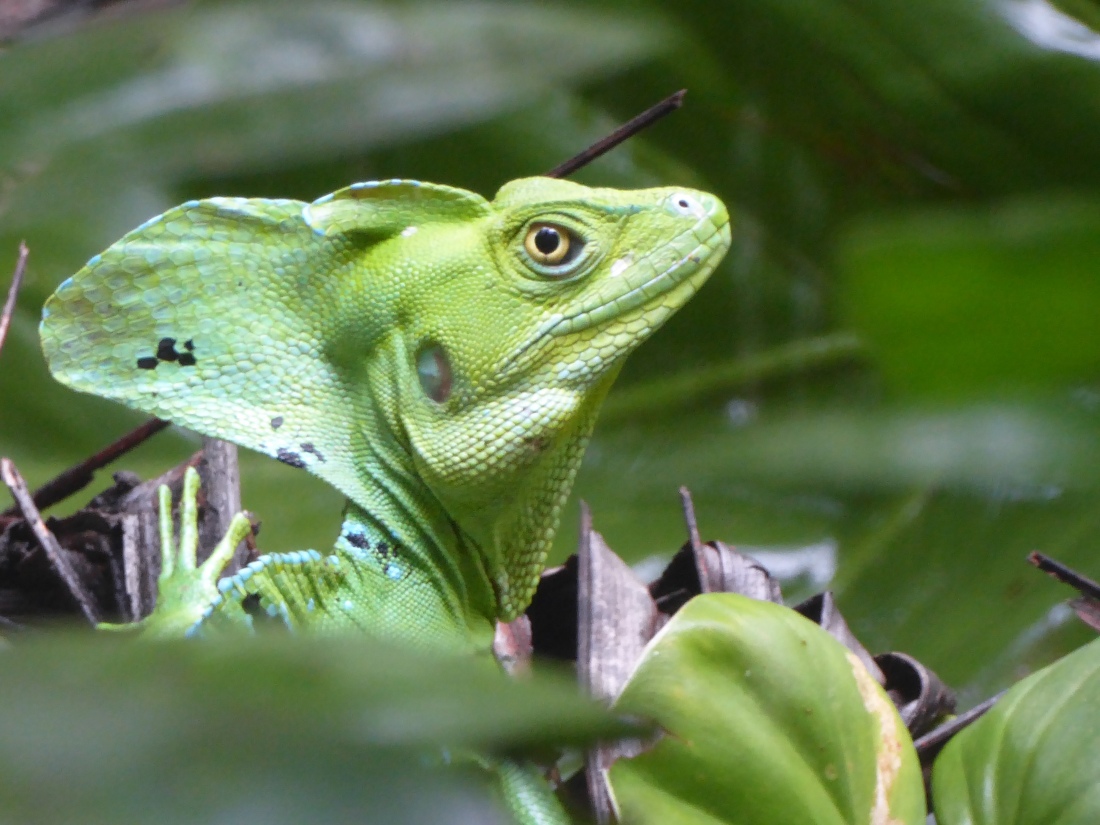
Above: the sudden sound of crashing vegetation revealed another Common Basilisk.
—————————————————————————————————————————————-
The rainy morning caused some ants to be on the move. A corridor of ants, at least eight or ten abreast, was marching across the trail. All the visitors were watching this marvellous procession. A French couple were walking along the trail, probably more focused on their two children, and he suddenly saw the ants. ‘Oh la la! Oui!’ he exclaimed. I had a great chuckle to myself. Cahuita National Park has a very high rate of tourists – each time we walked back to the entrance gate we would pass group of between two to ten people, or more, with an accredited tourist guide.
Some other Cahuita sights:
A Black Vulture hopping along after an egret in the hope it may steal a meal….
Four Gartered Trogons were seen sitting on power lines – four! For those of you not familiar with the trogon family, these birds can be notoriously difficult to see as they generally speaking, sit very still on branches in deep vegetation.
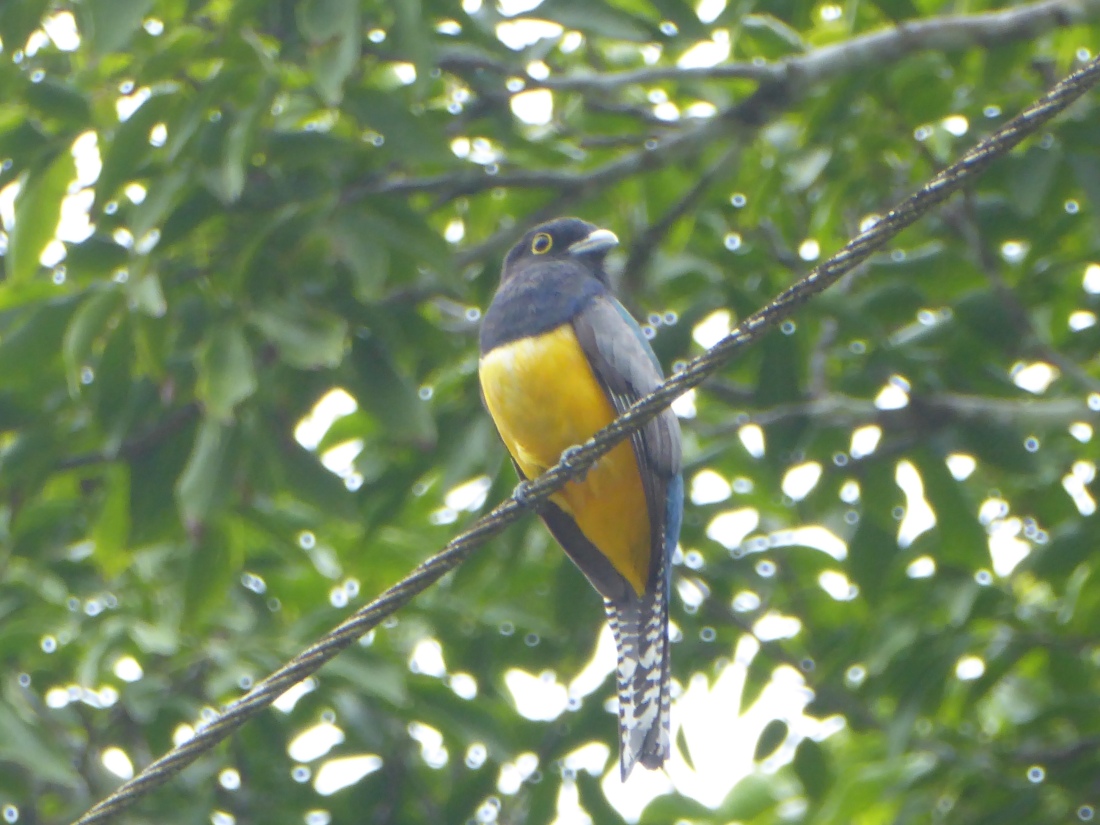
Above: Gartered Trogon.
—————————————————————————————————————————————-
Our next destination is San Jose, then Puerto Viejo Sarapiqui.
Wonderful photos of wildlife, thank you
LikeLike
Thanks Barbara!
LikeLike
Great entry Vicki. I loved the photos, particularly the one of the kitchen – the light is lovely coming in from the side. Some of the wildlife photos are stunning also, especially the reptiles. You guys are really in the thick of it there. I’m glad it’s a little cooler.
The map is great!
LikeLike
Thanks for the praise Suyra. I can assure you the kitchen photo was pure chance – just a quick snap. I am totally fascinated with the various reptiles here.
LikeLike